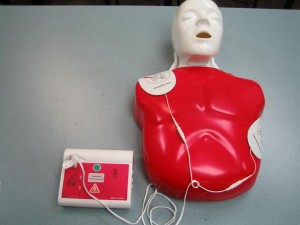CPR: first line management

When a person gets a heart attack, the first line of management is always CPR – whether or not the emergency happened in the hospital. Basic CPR is the bystander reaction to a heart attack while advanced CPR is a health care professional skill used in a medical environment. Basic CPR uses the Basic Life Support guidelines from AHA when attending to a cardiac emergency. Likewise, advanced CPR uses the Advanced Life Support guidelines.
The ALS guidelines still use the BLS guidelines as a core concept, building up the skill with medical management. Medical management typically includes the use of medication and equipment to supplement the CPR being given to the patient.
Basic Life Support
Core skills included in basic CPR are compression, ventilation, and defibrillation. These three are the cornerstones upon which other management techniques are used during cardiac arrest. During arrest, the heart stops beating completely, or isn’t beating enough to adequately supply blood to the rest of the body. Chest compressions will help with condition by pressing down on the chest and manually pumping the heart.
We teach our trainees to give ventilation in two ways: mouth-to-mouth and with a bag valve mask. We advise them to use a barrier device if they plan on giving mouth-to-mouth rescue breaths, and even gloves when giving compressions. This prevents the transfer of potentially dangerous microorganisms between the victim and the rescuer or bystander.
When bystanders rescue victims, it rare that they are able to defibrillate; it only in cases where an automated external defibrillator (AED) is available that they can. However, we still include this in all our Basic Life Support courses if ever the situation arises that they can use an AED. Defibrillation essentially sends electrical shock to the heart to help return it to a normal rhythm. Contrary to what you see in the movies, you can’t defibrillate on a person who has a flatline.
Training in BLS
- Basic Heartsaver CPR – 4 hours, for the public
- Basic Heartsaver CPR C – 4.5 hours, for HCPs (health care providers)
- Basic Life Support for HCPs – 4.5 hours
The first two programs, the Heartsaver classes, are basic training classes in CPR that teach one-person rescues. They have the curriculum structure but with the lessons tailored specially for people who work in health care and those who don’t. The last one, the BLS for HCPs program, teaches one and two-person rescue, teaching trainees about the latest AHA BLS guidelines.
Out of all the programs listed above, only the last program has an available re-certification class. Re-certification is available to rescuers who have credentials that are about to expire (NOT expired). If you have credentials that have already expired, you have to take the training class again to get a new one. We don’t allow rescuers with expired certificates to sign up for re-certification classes.
